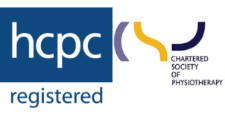Kinesiology tape and sports tape is a thin, stretchy, elastic cotton strip with an acrylic adhesive and it is almost identical to human skin in both thickness and elasticity. In this article we discus the methods used in taping. There is a vast array of taping methods available today, of which many can be used for problems with different anatomical locations. The exact application of each technique may be different depending on the reasoning process of the person who applied the tape. Because of the scant scientific evidence on this area and because each individual is different, there is no truly 'correct' method of applying tape, as each patient has a different problem.
If the tape is being applied by a chartered Physiotherapist then a thorough examination of the problem would have been undertaken, with the clinician then applying the tape with the aim of limiting unwanted movement at a joint or offloading specific anatomical structures where a weakness has been identified. Because there are a huge number of structures that could require support there is no single definitive taping technique. Therefore working with a Physiotherapist who can accurately diagnose and identify structures that might be a potential source of pain is key. Appropriate taping techniques can only be applied with this knowledge.
Literature describes taping in the treatment and prevention of several musculoskeletal conditions such as ankle sprains, patellofemoral pain, wrist sprains and shoulder injuries. Research methods include randomised controlled trials, retrospective and prospective cohort studies, biomechanical lab base studies and correlational epidemiological studies. The scientific evidence for the effectiveness of taping for these problems is mixed, but the clinical use of taping techniques is widespread. The ankle is the most commonly taped joint in football.
The type of taping technique and the choice of material used is largely based on the athletes preference, with this decision largely based on custom, superstition and comfort (both physical and mental). Ankle tape is also appropriate following acute ankle sprain. As well as immobilisation, a compression bandage can help to limit swelling. In the recent study by Barton et al 2105 BJSM physiotherapists advocated taping as a major component of the management of anterior knee pain. It was found that a combination of taping, manual therapy, appropriate exercise prescription, gait analysis had the most improved results for patients with anterior knee pain.
Here at the Physio Rooms we follow all methods of taping and where necessary are advocates of its usage. If you have any questions on taping or are experiencing a pain which could be alleviated by taping then please dont hesitate to contact us on 01273 667826 and we would be happy to share our knowledge.

